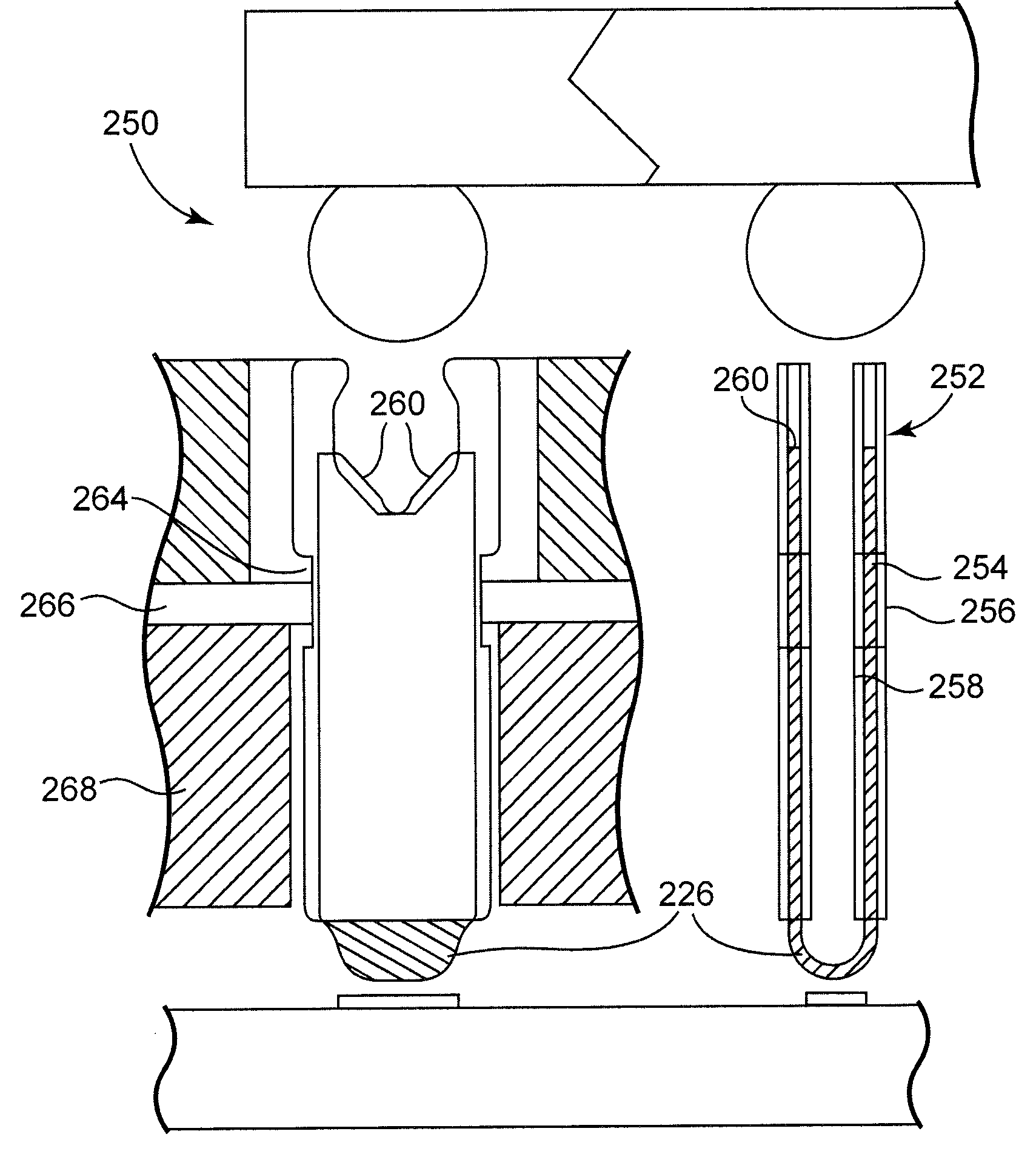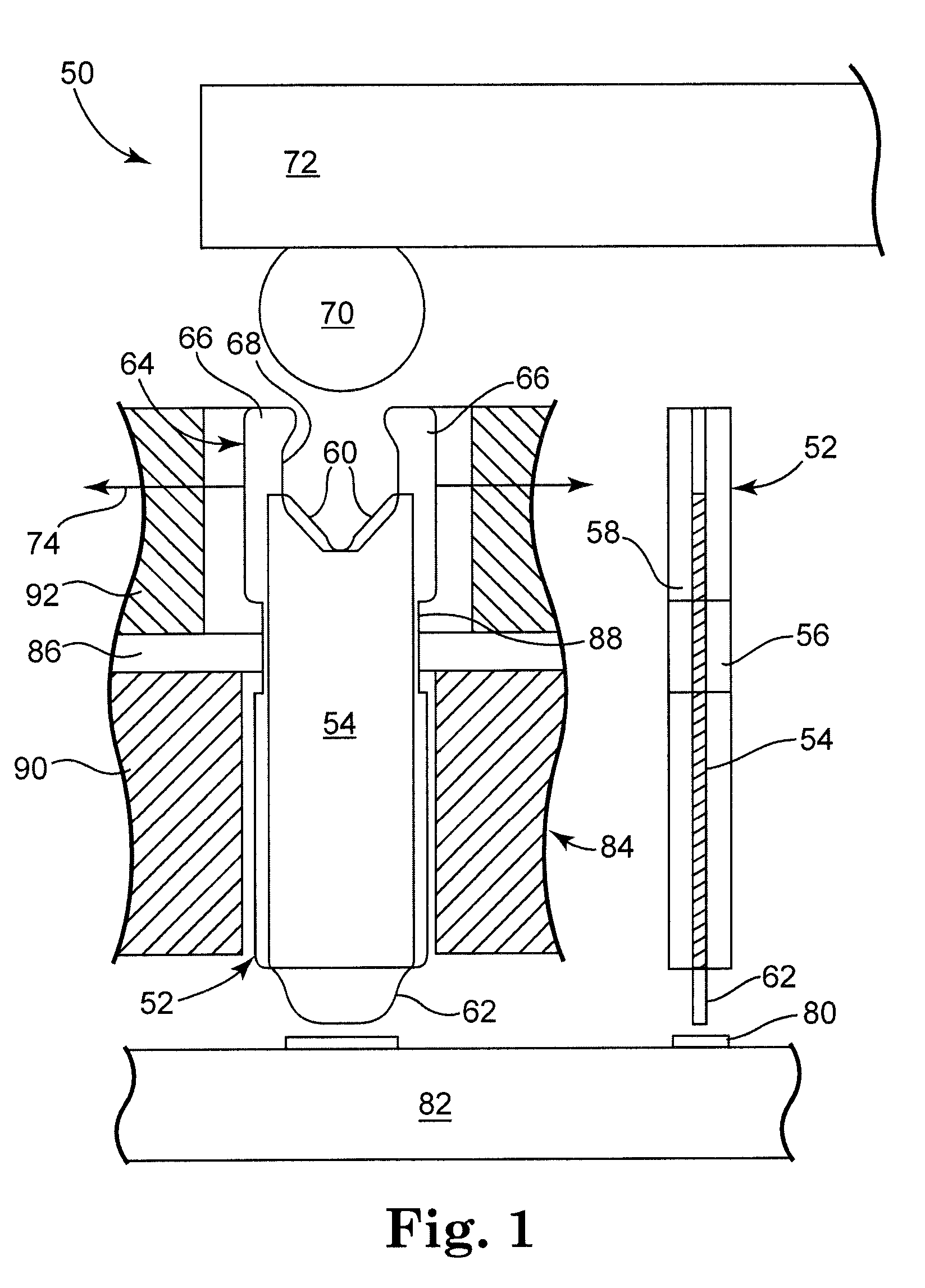Composite contact for fine pitch electrical interconnect assembly
a technology of electrical interconnects and composite contacts, which is applied in the direction of fixed connections, coupling device connections, electrical apparatus construction details, etc., can solve the problems of increasing the scrutiny of soldering these connectors to the printed circuit board, stressing the component, and the dielectric constant of tin lead alloy solder and associated chemicals, so as to improve the dielectric constant and reduce the complexity and size of the housing. , the effect of increasing the electrical performan
- Summary
- Abstract
- Description
- Claims
- Application Information
AI Technical Summary
Benefits of technology
Problems solved by technology
Method used
Image
Examples
Embodiment Construction
[0043]FIG. 1 is a side sectional view of an interconnect assembly 50 with composite contacts 52 in accordance with an embodiment of the present invention. The composite contacts 52 are illustrated in side and front section views. The composite contact 52 on the right-hand side of FIG. 1 illustrates conductive member 54 attached to first and second polymeric layers 56, 58. Composite contact 52 on the left-hand side of FIG. 1 is illustrated with polymeric layer 58 removed.
[0044]As use herein, the term “polymeric layer” refers to one or more layers of a moldable dielectric or an insulating material, such as for example, a polyethylene, lightweight polyester composites, polyvinylchloride, Kapton® polyimide film, or polytetrafluoroethelyne (PTFE). The conductive member can be any conductive material, such as for example gold, copper, or BeCu.
[0045]In one embodiment, the conductive member 54 is sandwiched between the polymeric layers 56, 58, potentially leaving at least a portion of the s...
PUM
 Login to View More
Login to View More Abstract
Description
Claims
Application Information
 Login to View More
Login to View More - R&D
- Intellectual Property
- Life Sciences
- Materials
- Tech Scout
- Unparalleled Data Quality
- Higher Quality Content
- 60% Fewer Hallucinations
Browse by: Latest US Patents, China's latest patents, Technical Efficacy Thesaurus, Application Domain, Technology Topic, Popular Technical Reports.
© 2025 PatSnap. All rights reserved.Legal|Privacy policy|Modern Slavery Act Transparency Statement|Sitemap|About US| Contact US: help@patsnap.com



